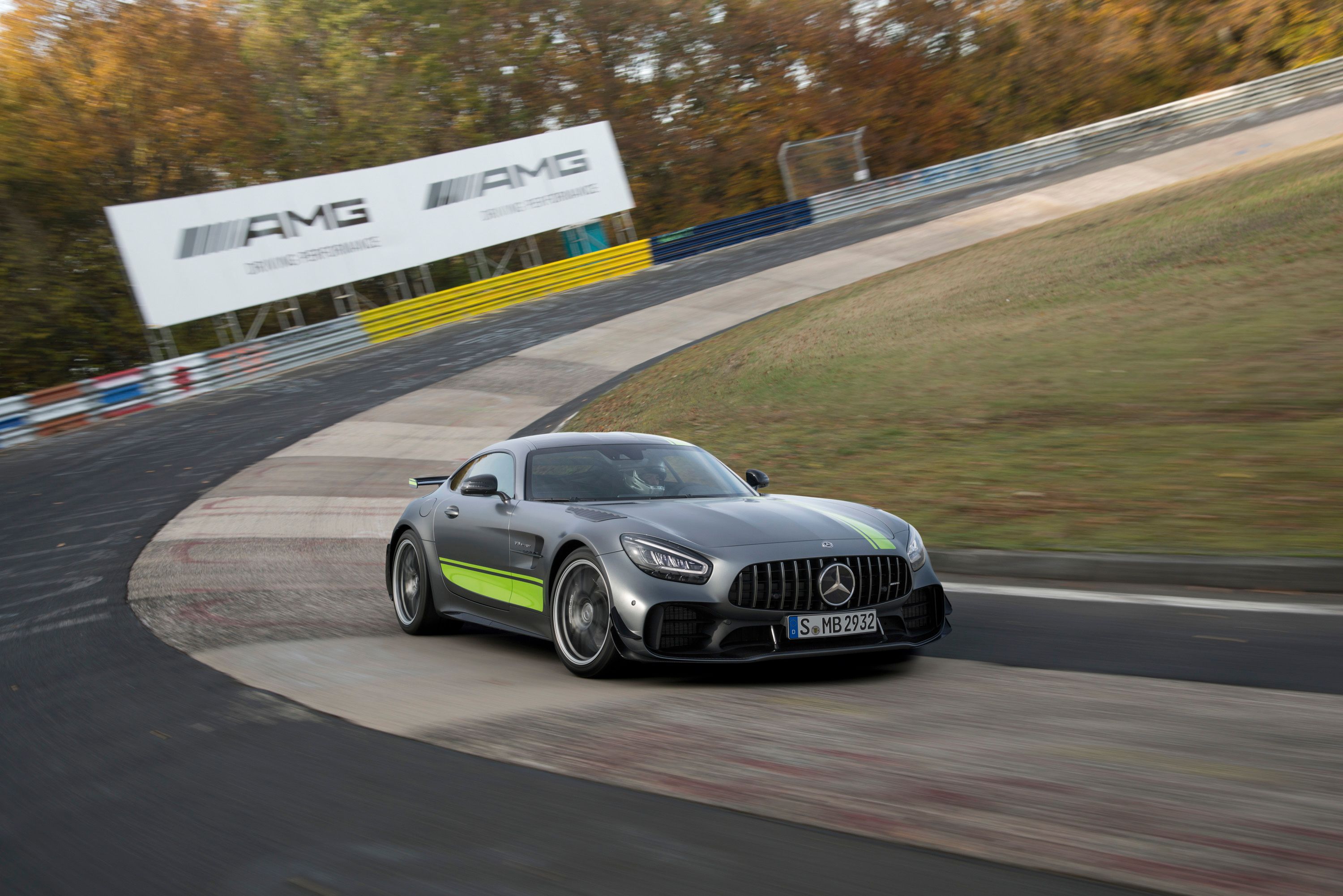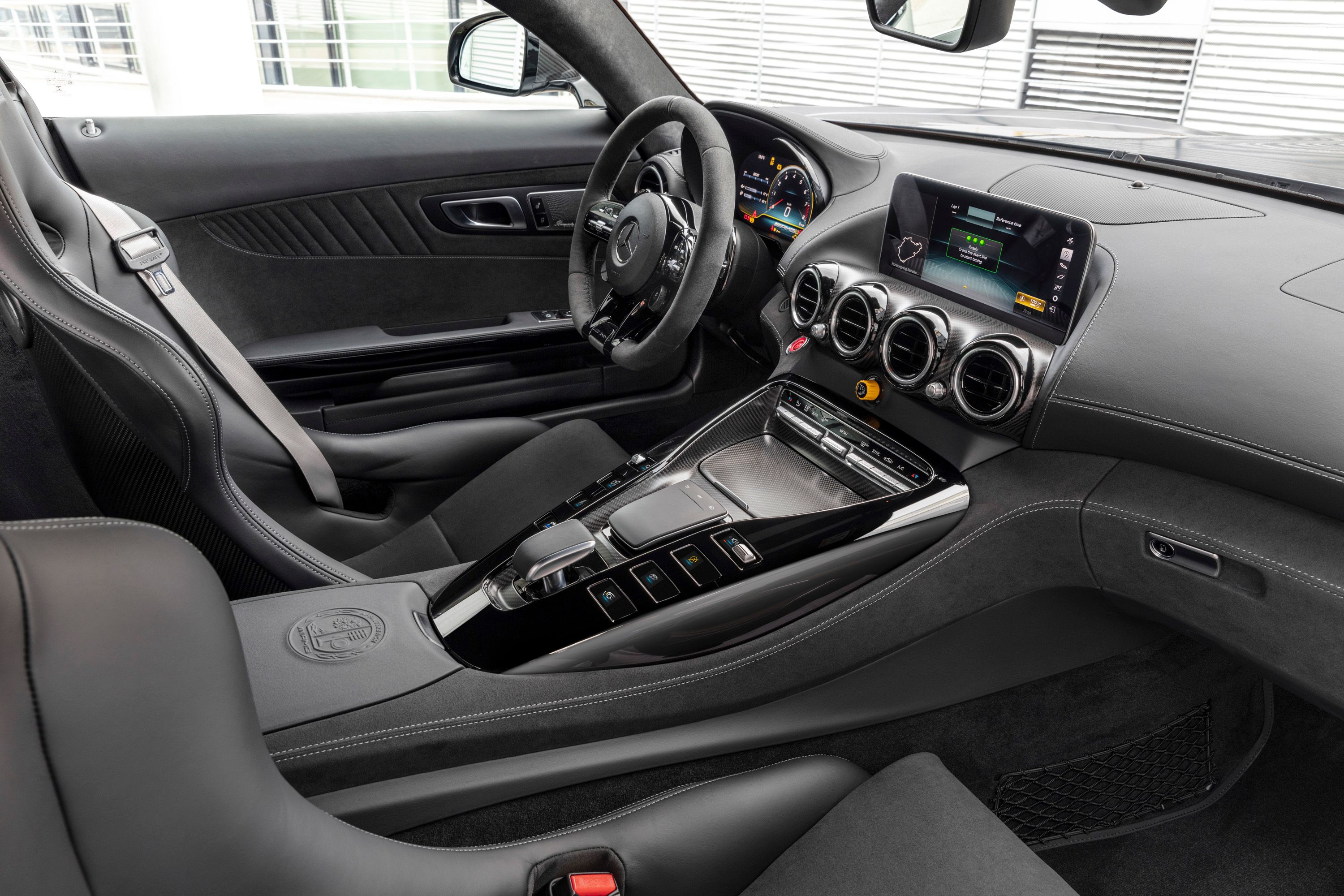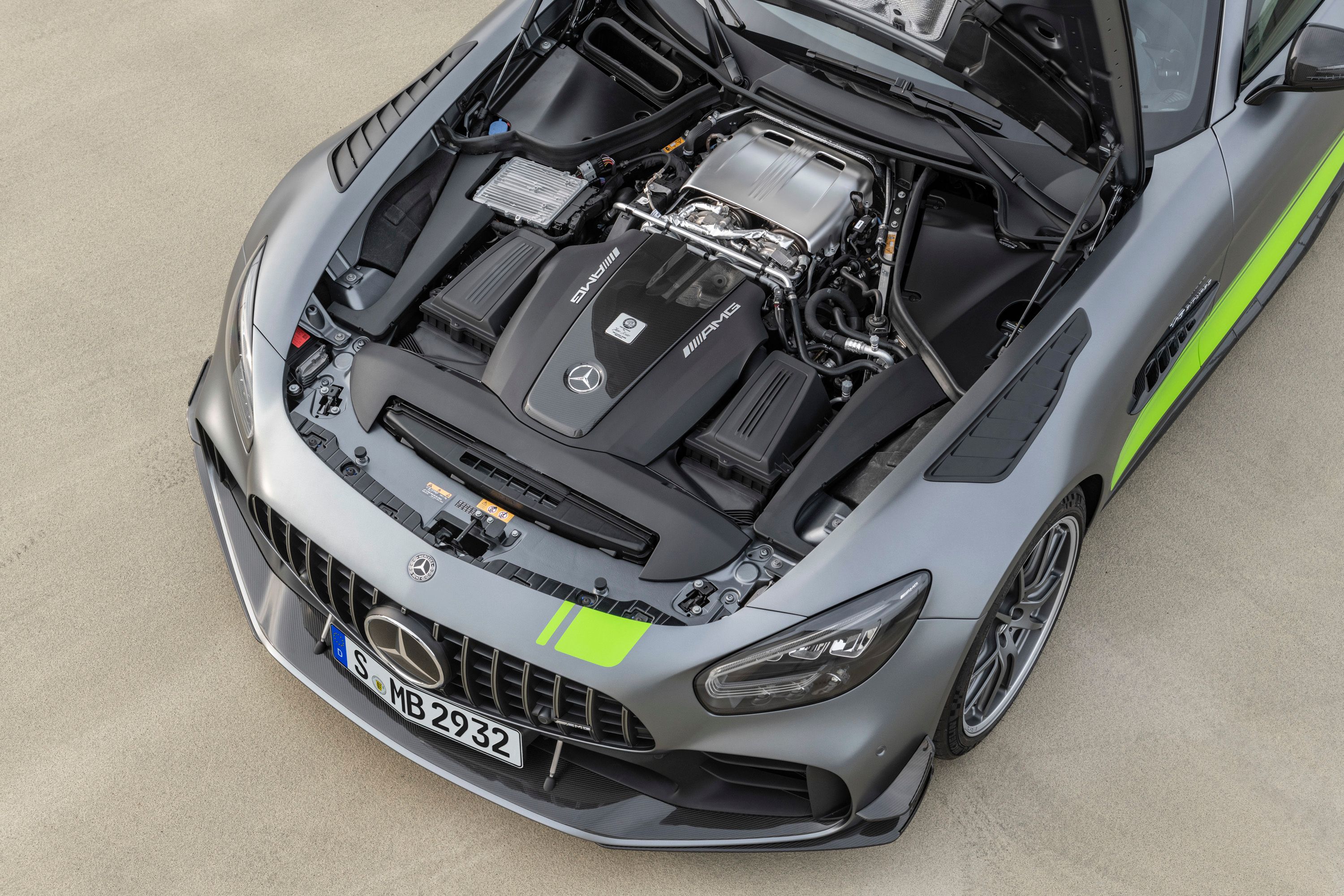Mercedes-Benz has unveiled the most extreme version of the AMG GT. Called the GT R Pro, it's as close to a road-going version of the GT4 race car as you'll ever get. It has an infusion of winglets on the body for better aero, and AMG has worked under the skin to make this car a beast at any track day event.
The AMG GT R Pro was presented along with its less potent siblings, the AMG GT Coupe, and the AMG GT Convertible. All three models now feature a number of design cues meant to bring the AMG GT family together stylistically as well as from a technological standpoint since a number of systems are now standard across the range which includes the AMG GT 4-door luxury sport sedan that was presented back in March at the Geneva Auto Show.
The AMG GT R PRO looks bolder, is lighter, and goes faster than any AMG GT
The Mercedes-Benz stand is a busy place at this year's L.A. Auto Show. Today, the German automaker revealed the facelifted versions of its AMG GT Coupe and AMG GT Convertible sports cars as well as the special edition AMG GT R PRO. It's an even faster, more refined, version of the AMG GT R which still seems fresh in our minds, although it was first shown at the Goodwood Festival of Speed back in 2016.
The exterior is also the first thing you'll notice on any car and, even more so, on the ultra-aggressive AMG GT R PRO. That's because AMG seems to have mastered the art of automotive transplant since they basically took the winglets off the nose of a GT4-spec AMG GT and glued them to the GT R PRO. You'll see two carbon fiber-coated winglets on either side of the nose, the lower ones transitioning without a hitch into the protruding lip of the splitter which is held in place by two metal braces.
The slightly modified air vents in the lower part of the front bumper are placed there - multiple strakes and curved surfaces included - to limit front-axle lift without negatively impacting the aerodynamic situation at the rear axle.
To make the car look more like the racing car it is a derivative of, the AMG GT R PRO sports other carbon inserts across the bodywork and some stripes along the sides that are identical to those seen on factory-backed Mercedes-Benz AMG GT race cars such as the Strakka Racing-entered GT3 cars that raced in the Blancpain GT Series this year. But those stripes aren't there only for the show, Mercedes claiming that one of their top works drivers, GT World Champion Maro Engel, lapped the Nurburgring-Nordschleife aboard the AMG GT R PRO in just 7.04.632.
To put it in context, the standard - if you can call it that - AMG GT R lapped the same 12.8-mile-long track over six seconds slower.
Dive under the car's luscious body and you'll find the improved suspension arrangement of this track-oriented model. The standard AMG GT comes with a double wishbone system up front which gains, on the GT R PRO, an adjustable torsion bare made out of carbon fiber. At the back, the torsion bar is made out of steel and you now get Uniball spherical bearings for the upper rear wishbones as well. This addition helps with toe-in and camber which remain unaffected even under high cornering loads.
What is more, you can now adjust a whole heap of things about your suspension easily, via a click system with an integrated adjustment dial on the damper. This allows you to set the spring preload length mechanically as well as the compression and rebound of the dampers. The compression rate is also adjustable to cater for fast or slow compression movements depending on the kind of track, or surface, you're going to drive on in your AMG GT R PRO.
Under the hood, though, there are no changes. You'll still find the same 4.0-liter twin-turbocharged V-8 that is capable of 577 horsepower at 6,250 rpm and 520 pound-feet of torque between 1,900 and 5,500 rpm. The Tiptronic 7-speed transmission was also left unattended. With that being said, the AMG GT R PRO should reach 60 mph well below the GT R's 3.6 seconds mark and it may exceed that model's 198 mph top speed although there's no confirmation about this from Mercedes-Benz.
2020 Mercedes-AMG GT Specifications
|
Mercedes-AMG GT (figures for Roadster in brackets) |
Mercedes-AMG GT S (figures for Roadster in brackets) |
Mercedes-AMG GT C (values for Roadster in parentheses) |
Mercedes-AMG GT R Mercedes-AMG GT R PRO |
|
|
Displacement |
3982 cc |
3982 cc |
3982 cc |
3982 cc |
|
Output |
350 kW (476 hp) at 6000 rpm |
384 kW (522 hp) at 6250 rpm |
410 kW (557 hp) at 5750-6750 rpm |
430 kW (585 hp) at 6250 rpm |
|
Peak torque |
630 Nm at 1900-5000 rpm |
670 Nm at 1900-5000 rpm |
680 Nm at 2100-5500 rpm |
700 Nm at 2100-5500 rpm |
|
Fuel consumption, combined |
11.4 l/100 km (11.5 l/100 km) |
11.5 l/100 km (11.5 l/100 km) |
12.4 l/100 km (12.5 l/100 km) |
12.4 l/100 km |
|
CO2 emissions, combined |
261 g/km (262 g/km) |
262 g/km (262 g/km) |
284 g/km (284 g/km) |
284 g/km |
|
Acceleration 0-100 km/h |
4.0 s (4.0 s) |
3.8 s (3.8 s) |
3.7 s (3.7 s) |
3.6 s |
|
Top speed |
304 km/h (302 km/h) |
310 km/h (308 km/h) |
317 km/h (316 km/h) |
318 km/h |
Further reading
Read our full review on the 2018 Mercedes-AMG GT R.
Read our full review on the 2019 Mercedes AMG GT R Roadster.
Read our full speculative review on the 2020 Mercedes-AMG GT Black Series.






